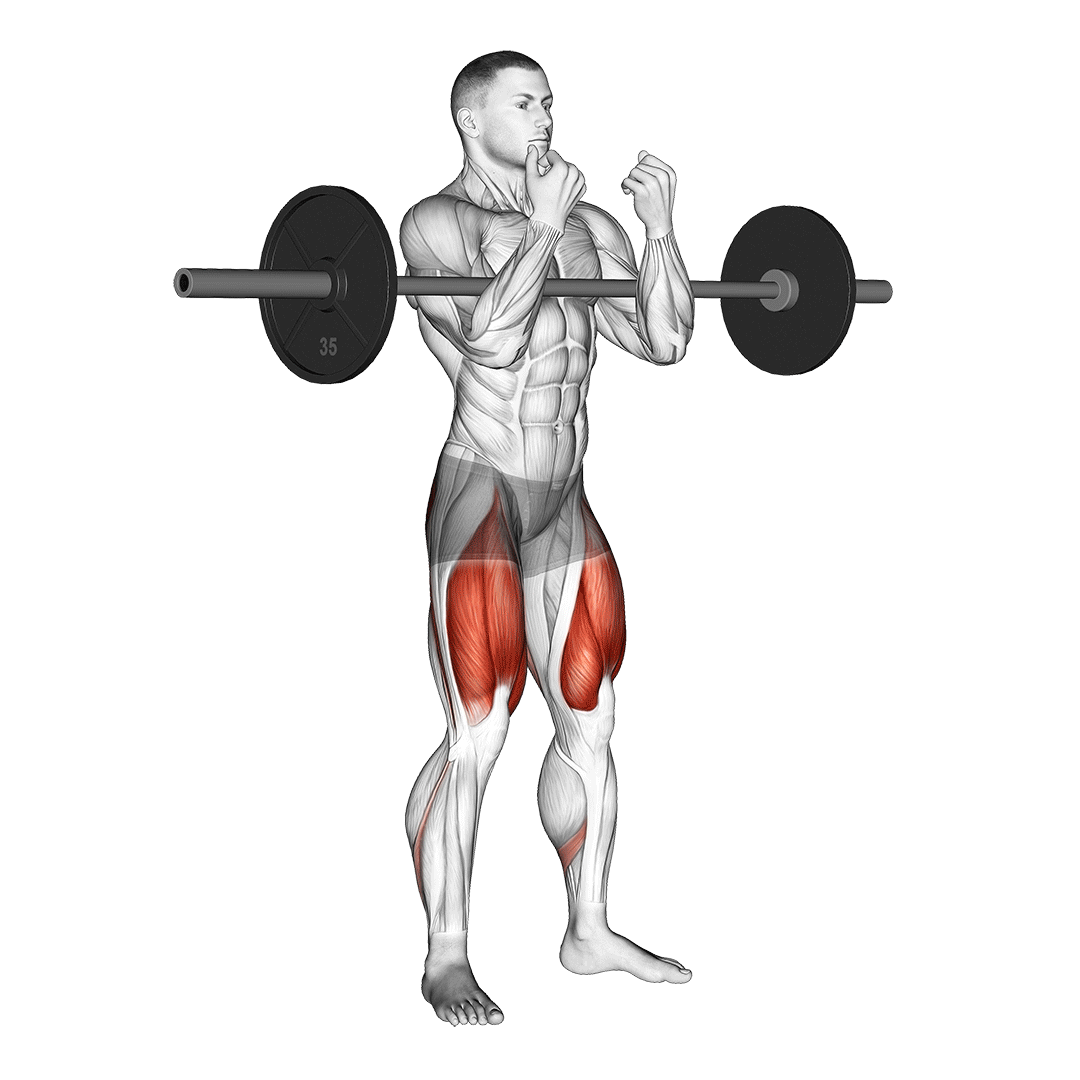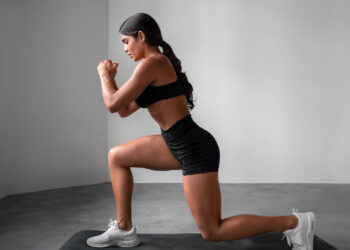Experience the potency of the Barbell Full Zercher Squat, a dynamic exercise that not only targets glute strength but also enhances core stability, back resilience, and leg definition. With the barbell cradled between your elbows, this variation demands exceptional balance and focus during each rep, propelling you towards improved functional strength and endurance.
The Barbell Full Zercher Squat primarily works the glutes, quadriceps, hamstrings, and core, offering a comprehensive lower body workout while also engaging the upper body, particularly the biceps and forearms. Start incorporating this squat into your routine carefully, aiming for one to two sessions per week to allow your body to adapt. Prioritize form; maintain an upright chest, engaged core, and avoid letting your back round or elbows drop to prevent injury. Beginners can begin with lighter weights or a broomstick, progressing gradually as strength increases.
By embracing the Barbell Full Zercher Squat, you’re committing to developing strength, balance, and resilience. Focus on executing each movement correctly, and enjoy the transformative benefits for your fitness journey.
How to Do a Barbell Full Zercher Squat

Begin by standing with your feet shoulder-width apart and a barbell resting in the crooks of your elbows, secured against your chest. Your elbows should be pointed forward, and your core engaged.
- Engage your core and maintain an upright posture.
- Lower your body by bending at the hips and knees, keeping your chest up and back straight.
- Descend until your thighs are parallel to the floor or lower, ensuring your knees track over your toes.
- Drive through your heels to return to the starting position, fully extending your hips and knees.
Inhale as you lower into the squat, and exhale as you push back up to the starting position.
Level Up Your Fitness: Join our 💪 strong community in Fitness Volt Newsletter. Get daily inspiration, expert-backed workouts, nutrition tips, the latest in strength sports, and the support you need to reach your goals. Subscribe for free!
Level Up Your Fitness: Join our 💪 strong community in Fitness Volt Newsletter. Get daily inspiration, expert-backed workouts, nutrition tips, the latest in strength sports, and the support you need to reach your goals. Subscribe for free!
Common Mistakes
- Incorrect Barbell Position: Placing the barbell too low on the arms or not securing it properly can lead to discomfort. Ensure the barbell rests in the crooks of your elbows securely, allowing for better stability.
- Insufficient Core Engagement: Failing to engage the core can compromise your form and increase the risk of injury. Always focus on actively tightening your core muscles throughout the squat.
- Leaning Forward: Inadequate upper body posture often results in leaning forward, which strains the back. Maintain an upright torso by consciously keeping your chest up and shoulders back.
- Knees Caving In: Allowing the knees to collapse inward during the squat can create undue stress on the joints. Ensure that your knees remain aligned over your toes throughout the movement.
- Not Squatting Deep Enough: Limiting the squat depth can undercut the benefits and effectiveness of the exercise. Aim to lower down until your thighs are parallel to the ground or lower, depending on your range of motion and flexibility.
Benefits of the Barbell Full Zercher Squat
- Enhances glute strength: The unique positioning of the barbell maximizes engagement of the glute muscles, promoting muscle growth and power.
- Improves core stability: The Zercher squat challenges your core, as it requires maintaining an upright posture under load, thereby enhancing overall core strength.
- Boosts functional strength: This squat variation mimics real-world movements, translating to better performance in everyday activities and sports.
- Encourages better squat mechanics: By prioritizing an upright torso, it helps to reinforce proper squat form, reducing the risk of injury.
- Diverse muscle engagement: It activates multiple muscle groups, including quadriceps, hamstrings, and lower back, providing a comprehensive lower-body workout.
Exercise Variations
Alternative Exercises
Safety Precautions
Before attempting the Barbell Full Zercher Squat, it’s essential to ensure your form is correct to avoid potential injuries. Begin with a lightweight barbell to familiarize yourself with the movement pattern. This exercise places stress on the hips, knees, and lower back, so it’s crucial to prioritize proper alignment and core engagement at all times.
Always use appropriate footwear that provides stability and grip. Avoid squatting on slippery surfaces or in crowded environments where you might be at risk of colliding with others. If you’re new to this exercise or unsure about your technique, consider working with a trainer who can provide feedback and guide you in achieving safe and effective movements. Additionally, implement the buddy system and have someone spot you when lifting heavier weights to ensure safety during the exercise.
Finally, listen to your body. If you experience pain, discomfort, or unusual fatigue, stop immediately and assess your form, and consider consulting a healthcare professional. Remember that quality over quantity is vital in any strength training regimen, and taking the time to learn the Barbell Full Zercher Squat correctly will yield better results and fewer injuries over time.
Interested in measuring your progress? Check out our strength standards for Zercher Squat, Squat.








